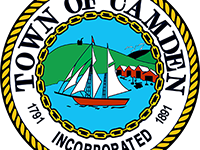Cheaper, Faster, Better Internet
There is no question that Internet access is playing a larger role in our lives every day, and that its positive impacts will continue to grow. At times we seem bombarded with terms not clearly defined, such as “broadband,” “fiber,” “DSL,” “wireless,” “satellite” – but what do these terms mean and what do we really need to know about them?
It comes down to this: Experts agree that fiber (bundles of tiny strands of glass which transmit data via light) is the key link to all modern communication systems – the only question is how do we get it to every home and business throughout the nation, and particularly to everyone in Maine and the Midcoast region?
The amount of data that travels through the internet every day is difficult to comprehend. In 2021, a million minutes of video will stream over the internet every second. No technology except fiber is capable of carrying this amount of data. In fact, 196 fiber strands, each thinner than a human hair, can fit into a bundle no bigger around than a pencil and yet can carry all of the world’s internet traffic!
Landline telephones and internet connections called “DSL” or “cable,” are made of copper wires. But copper is not capable of transmitting the amount or speed of data that flows across today’s internet. Likewise, basic physics teaches us that the speed of light is much faster than the speed of sound – meaning that the light which travels across fiber strands will always be faster than the sound waves that travel through wireless or satellite communication. Fiber makes it possible to transmit millions of times more data than in a cable or DSL system.
This is the reason that fiber has formed the backbone of international communications for decades, through sub-marine cables buried underneath the ocean floors connecting our continents, underground connecting one end of our nation to the other, and through the State of Maine in a network referred to as the “3 Ring Binder.”
But when the fiber gets close to homes and businesses, particularly here in Maine, it has traditionally connected to copper. Imagine this – fiber is like the interstate in which cars can travel at 70 mph. But when the data hits copper, it is akin to hitting a poorly maintained dirt road, reducing the speed and our ability to connect to the internet. The final step for 21st century communication involves extending the existing fiber right into our homes and businesses, called Fiber to the Home (FTTH).
In this series we will explore how we might be able to achieve FTTH in Camden and Rockport and the benefits it would provide in terms of economic development; educational opportunities; telecommuting; support for home-based businesses; healthcare delivered via the Internet; attracting younger generations; increasing home values and marketability; and overall ease, convenience and quality of daily living.
Event Date
Address
United States






















